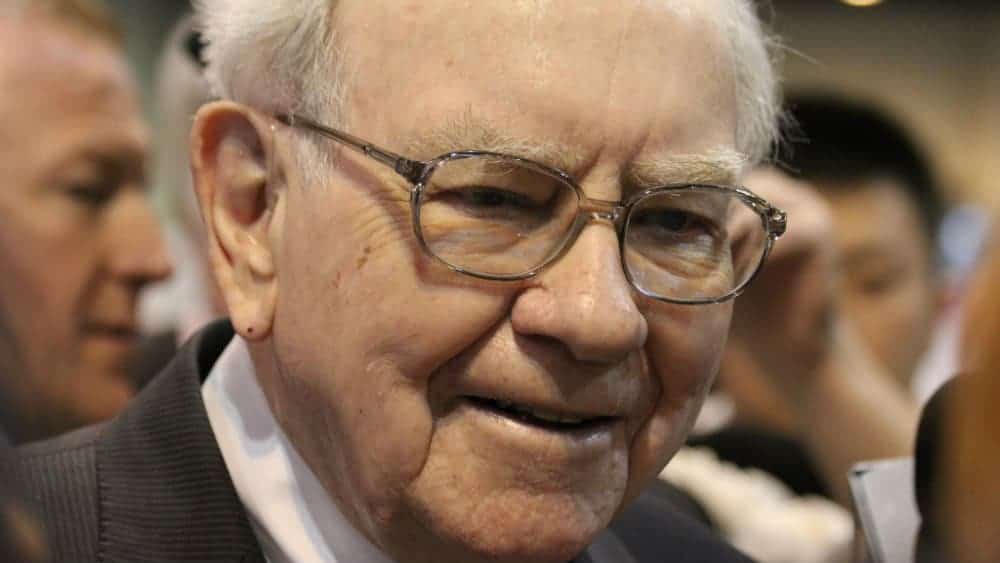How Warren Buffett Invests in Growth Stocks

Warren Buffett has famously shunned high-tech growth stocks for most of his career. He doesn’t invest in what he doesn’t understand, and through the decades, he’s failed to understand the business of the high tech. Of course, that was then, and this is now.
Buffett has more than doubled his money in shares of tech (or consumer company) kingpin Apple and with regrets of not investing in names like Amazon.com, it’s clear that the Oracle of Omaha has realized that it’s going to be tough to beat the market in the digital era without investing in today’s tech titans.
Buffett is still sharp at the ripe old age of 89. He’s always looking to expand his circle of competence to include “growthy” sectors of the market like technology.
And while you wouldn’t think he’d suddenly change his tune after decades of shunning tech-savvy growth investments, you must realize that he has many folks in his corner who do have tech in the dead centre of their circles of competence, and they’ve been helping the Oracle gain his sea legs over the years.
Growth and value are oxymorons… aren’t they?
Hyper-growth stocks with pie-in-the-sky valuations are once again in style. And many uninformed tech-shunning value investors are bringing up the dotcom bubble once again, even though valuations are nowhere near as absurd as they were back at the bubble’s peak.
While tech and hyper-growth stocks may not be at bubble levels, investors need to be careful they don’t pay up whatever Mr. Market asks for on any given in-demand growth play.
Valuation still matters. As Buffett once said, “All investing is value investing, and while it’s justifiable to pay a premium for a hyper-growth stock, one must realize that it’s still possible to pay way too much of a premium.”
So, before you think about following the herd by backing up the truck on today’s “sexiest” investments at whatever price, with a “buy high, sell higher” strategy in mind, you should take a step back and ask yourself whether you’ve done the homework on a name or if you’re surrendering to FOMO (the fear of missing out) because of one too many overly euphoric bull pieces that you read in the mainstream financial media.
Sure, all investing is value investing. And while a name like Shopify could be a bargain at a seemingly non-sensical multiple like 30 times sales (one of the highest multiples out there today), it’s essential for investors to still weigh the price paid for the growth they’ll receive to avoid paying for many years (or decades) worth of growth right off the bat.
Even the best, growthiest company on the planet can be a bad investment if the price paid isn’t right.
Just how expensive is too expensive?
Even a calculated long-term investor new to the realm of growth stocks can get burned, as their long-term value strategy deviates to a more short-term momentum-oriented strategy.
Investing in growth isn’t just about buying high (a stock like Shopify will probably never trade at a valuation that would be considered remotely cheap), and selling higher. The fundamentals still matter and can help investors pinpoint the intrinsic value of a stock whose fair value range lies in the clouds.
Back to Shopify. The stock trades at a ridiculous multiple that most would immediately consider severely overvalued or even in bubble territory. At the time of writing, shares of Shopify trade at 38.1 times sales, one of the highest P/S multiples you’re likely to find on this side of the border.
The multiple is so frothy that even half or even a quarter of Shopify’s P/S would be considered expensive. But as it turns out, a 20 times multiples (or lower) is actually a bargain when you weigh the sheer growth Shopify is capable of and the exceptional managers running the show with a true visionary in Tobias Lütke at the helm.
So, just how lofty can valuation become?
That ultimately depends on the fundamentals of the underlying business.
There’s no rule of thumb such as “don’t invest in stocks with P/E’s or P/S’s above X,” and the sooner value-conscious investors, as opposed to speculators, can realize this, the more successful they’ll be in analyzing growth companies.
More reading
Want to Pay Less Taxes? Listen to This New 2020 CRA Tax Break
CPP Pension User: 2 Reasons You Should NOT Take Your CPP at 60
The Canada Revenue Agency Taxes CPP, OAS and RRSPs… But Not This Alternative!
John Mackey, CEO of Whole Foods Market, an Amazon subsidiary, is a member of The Motley Fool’s board of directors. Fool contributor Joey Frenette owns shares of Apple. David Gardner owns shares of Amazon and Apple. Tom Gardner owns shares of Shopify. The Motley Fool owns shares of and recommends Amazon, Apple, Shopify, and Shopify.
The Motley Fool’s purpose is to help the world invest, better. Click here now for your free subscription to Take Stock, The Motley Fool Canada’s free investing newsletter. Packed with stock ideas and investing advice, it is essential reading for anyone looking to build and grow their wealth in the years ahead. Motley Fool Canada 2020


